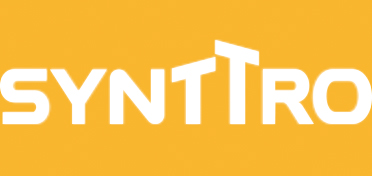From/builtin
By/Brian Nordli

As a remote manager at Webflow, Heather Doshay knows her actions set the tone for her team — whether she means them to or not.
Checking in with an employee too often can trigger a fear that they’re not doing enough work. Sending a short Slack message can inadvertently come off as a criticism. Conversely, every time she takes mental-health day or sets aside time for coffee chats on Fridays, it tells her employees that taking a break from their work is OK.
“You’re the social norms manager for your team. Whatever you do, you’re saying is OK,” Doshay said. “You’re always influencing your team, whether you communicate it or not.”
In a lot of ways, managing a remote team should be the same as managing a team in the office. The expectations should be the same, the career growth and development opportunities should be equitable, and there should still be time to bond. The difference comes in how the manager works with their team.
“You’re the social norms manager for your team. Whatever you do, you’re saying is OK.”
HubSpot provides all new managers with a “Remote Management Field Guide,” to help them navigate this challenge. The guide doesn’t so much give them solutions for how to manage their teams as questions they should be asking themselves. Those include:
- When there’s an emergency, how will the team communicate?
- If employees work in different time zones, what hours should they be expected to be online?
- How will your preferred communication style translate over Slack?
“Every job and employee-manager relationship is going to be unique,” said Meaghan Williams, HubSpot’s remote work and inclusion program manager. “We don’t give them the answer, but we give them the questions to ask to make sure employees and managers are on the same page about whatever the answer is going to be.”
Ultimately, the key to managing a team from home comes down to building trust and creating a safe psychological space for employees to thrive, Doshay said. That trust comes in the form of clear communication and expectations, spending more time supporting employees than managing them, and taking time to bond. The result: a more productive and engaged team.
We spoke with Doshay, Williams and FlexJobs senior career specialist Brie Reynolds on how managers can help their teams thrive.
HAVE A CLEAR REMOTE POLICY
Before working from home became a mandatory requirement for companies across the country, it wasn’t uncommon for the concept of remote work to be met with confusion among employees.
At some companies, it was code for a mental-health day. At others, it meant work as usual. Without a clear remote work policy, it can be difficult for employees to know exactly what is and isn’t expected of them if they take advantage of working from home. That challenge extends to managers, too, as they figure out what they should expect from employees working from home, Reynolds said.
“From a management perspective, it’s a great idea to have something people can go to and say: ‘Here are the rules for remote work. Here’s who gets to work remotely and here’s what that looks like.’”
As offices start to re-open and teams transition back into the office, it’s important for managers to define what remote work means for their teams or companies. They need to decide whether it’s a perk or an alternative to the office. The policy should include which employees are allowed to work from home (based on job requirements), how often it’s allowed, what’s expected from a person when they’re working from home and the company’s preferred communication strategies.
It can also help to think through what equipment is necessary — whether an employee should take home their laptop or need a VPN installed. Clarifying these questions can help a manager build trust and figure out how they should support their remote team.
“From a management perspective, it’s a great idea to have something people can go to and say: ‘Here are the rules for remote work. Here’s who gets to work remotely and here’s what that looks like,’” Reynolds said.
DON’T MICROMANAGE
For any manager new to remote work, there can be an impulse to want to track everything the team is doing.
Without the structure of an office to fall back on, or the ability to swing by desks and check in, it can be tough to stay in the loop and on top of progress. While it might make sense to have employees chart their daily progress in a spreadsheet, that’s the worst thing a manager can do, Doshay said.
Forcing employees to track their work and evaluating their work based on that sews mistrust and can create a culture where employees only do what is asked of them. Meanwhile, from a productivity standpoint, introducing an additional hour of work for a task that doesn’t directly benefit the company adds up.
“An extra hour of work is going to turn an eight-hour day into a nine-hour day, and that adds up over weeks and months,” Doshay said. “But they also might say, ‘What can I trade-off?’”
It also creates a feeling of mistrust and can cause employees to disengage.
Doshay recommends that managers ask themselves why they’re asking for employees to track their work, and what other things they could do with the time they spend on it. But that’s not to say there aren’t some tasks that need to be tracked.
“An extra hour of work is going to turn an eight-hour day into a nine-hour day, and that adds up over weeks and months.”
If a team relies on a whiteboard in the office, it’s natural for that to continue remotely, Doshay said. Meanwhile, working remotely might accentuate a lack of clarity on project goals or communication that wasn’t readily apparent in the office. In those cases, there are tools that can assist with measuring progress.
At Webflow, each team has the autonomy to pick the best productivity tool for them. Some handy ones include Dropbox Paper, Google Suite, Asana and Monday.com, Doshay said.
Whichever tool a team chooses, it’s critical to make it something that will continue once the office re-opens. Doing so increases buy-in and makes it worth the team’s time to learn the platform and integrate it into its daily work.
MASTER CLEAR WRITTEN COMMUNICATION
As important as mastering written communication is for employees, it goes double for managers.
If your communication style isn’t clear, asking a question like “Hey, what are you up to?” over Slack can have unintended consequences. Even if the intent is to just check in on the employee, it can send their mind spiraling as they wonder whether they’re doing something wrong, Williams said.
“As an employee, it can almost feel like they’re checking up on you, even if the intention of the message is to sincerely know how their day is going,” Williams said.
During HubSpot’s training, Williams encourages managers to set clear communication expectations with employees and differentiate between checking in and checking up. It can be helpful to define whether the communication will occur over Slack or email, how often you will be checking in with your team and how frequently you expect them to respond.
“We talk a lot about laying those expectations out upfront and letting your team know: “I’m going to be checking in with you once a day around 3 p.m. If you’re on a call, you don’t need to respond immediately. I just want to make sure you’re getting what you need from me,’” Williams said.
“Going above and beyond to give some feedback, whether it’s constructive or positive, is important because remote workers do miss out on that not being in person.”
Since an employee can’t walk up to the manager’s desk when a quick response is needed, it can also help to outline an emergency strategy. This should include the primary mode of communication and who the employee should contact if the manager isn’t available.
With frequent work communication bandying back-and-forth on Slack or email, it’s also important to find time to celebrate wins. Taking the time to write a message celebrating or congratulating an employee on an accomplishment can go a long way in building trust and support among the team.
“Going above and beyond to give some feedback, whether it’s constructive or positive, is important because remote workers do miss out on that not being in person,” Williams said.
CREATE BONDING MOMENTS
Every other Friday, Doshay hosts a 45-minute coffee chat with her team. She schedules the chat directly before lunch and makes it optional for employees to attend.
There’s no agenda for the coffee sessions, so they usually end up talking about whatever is on their minds, she said. Lately, those conversations have involved dishing on the latest Netflix shows people are binge-watching.
“What it spawned was this sense of psychological safety that I care about you as a whole person. It’s OK that we take 45 minutes in the middle of a workday to chat.”
Meanwhile, on the last Friday of the month, a manager at Webflow also started a happy hour for the team from 4 p.m. to 6 p.m. During the happy hour, the team has played Jeopardy! and hosted formal team debates around topics like “celebrities are good versus celebrities are bad.”
Whether it’s a big activity like an organized debate or smaller coffee chats, scheduling those moments of bonding show employees that they’re allowed to take a break from work, and opens up opportunities to connect on a more personal level.
The pay-off for the team should not be overlooked. Making time for those impromptu moments of bonding can create an environment where employees feel comfortable experimenting, making mistakes and learning from those mistakes.
“What it spawned was this sense of psychological safety that I care about you as a whole person,” Doshay said. “It’s OK that we take 45 minutes in the middle of a workday to chat.”
